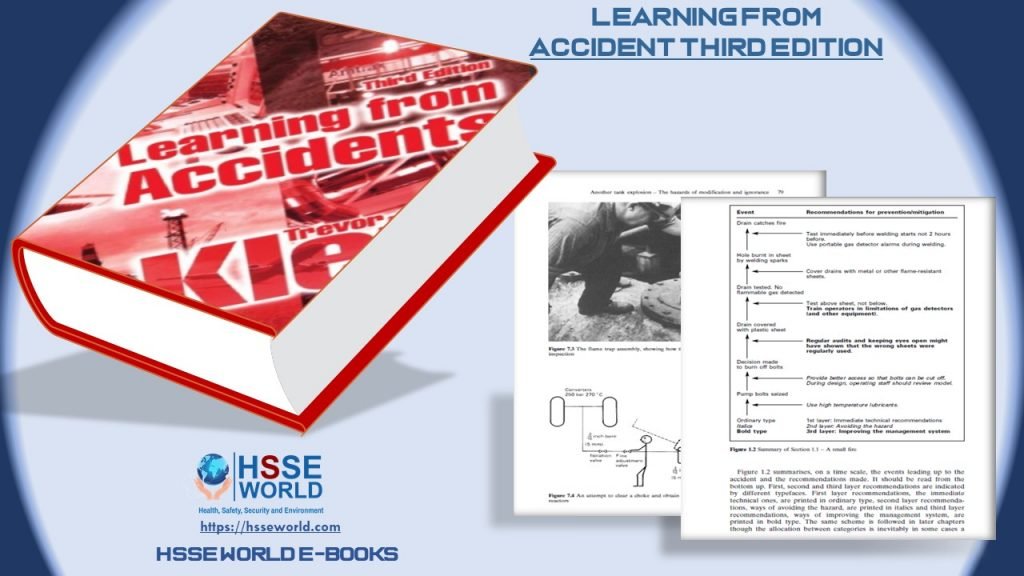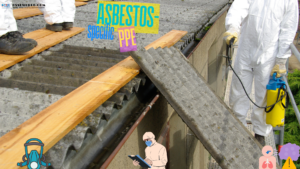E-Books: Learning from Accidents
4 min readLearning from Accidents Third edition Book by Trevor Kletz. This book deals mainly with accident investigation and the need to look beyond the immediate technical causes for ways of avoiding the hazards and for weaknesses in the management system. The other book, as the sub-title indicates, shows how accidents are forgotten and then repeated, and suggests ways of improving corporate memory. and thanks are due to the original publishers for permission to quote from them.
The accident investigation is like peeling an onion or, if you prefer more poetic metaphors, dismantling a Russian doll or the dance of the seven veils. Beneath one layer of causes and recommendations, there are other,
less superficial layers. The outer layers deal with the immediate technical causes while the inner layers are concerned with ways of avoiding the hazards and with the underlying causes, such as weaknesses in the management system. Very often only the outer layers are considered and thus we fail to use all the information for which we have paid the high price of an accident. The aim of this book is to show, by analyzing accidents that have occurred, how we can learn more from accidents and thus be better able to prevent them from occurring again. Just as we are blind to all but one of many octaves in the electromagnetic spectrum, so we are often blind to the many causes of an accident and the many missed opportunities preventing it. The aim of this book is to help us see the infra-red
and ultra-violet of accident prevention (Figure 1). Most of the accidents described have been chosen because they teach us important lessons and not because they killed many people or caused substantial damage. They thus include, at one extreme, accidents like Chernobyl and Bhopal that shook the world and at the other extreme accidents that, by good fortune,
injured no one and caused little damage. The first edition discussed accidents which had occurred mainly in the chemical industry, but later editions cover a wider range. The book should, therefore, interest all those concerned with the investigation of accidents, of whatever sort, and all those who work in industry, whether in design, operations, or loss prevention.


I am not suggesting that the immediate causes of an accident are any less important than the underlying causes. All must be considered if we wish to prevent further accidents, as the examples will show. But putting the immediate causes right will prevent only the last accident happening again; attending to the underlying causes may prevent many similar accidents.


Contents
The Contents of Learning from Accidents Book
1 Two simple incidents
2 Protective system failure
3 Poor procedures and poor management
4 A gas leak and explosion – The hazards of insularity
5 A liquid leak and fire and the hazards of amateurism
6 A tank explosion – The hazards of optional extras
7 Another tank explosion – The hazards of modification and ignorance
8 Flixborough
9 Seveso
10 Bhopal
11 Three Mile Island
12 Chernobyl
13 Aberfan
14 Missing recommendations
15 Three weeks in a works
16 Pipe Failures
17 Piper Alpha
18 The King’s Cross underground railway station fire
19 Clapham Junction – Every sort of human error
20 Herald of Free Enterprise
21 Some aviation accidents
22 Invisible hazards
Download the book
More Downloads
- E-Books: Healthcare Hazard Control & Safety Management
- E-Books: Safety, Health and Working Conditions Training Manual
- E-Books: Energy Efficiency in Water and Wastewater Facilities
- E-Books: Fire Service Features of Buildings and Fire Protection Systems
- E-Books: Evaluation of Fire Safety free download
- E-Books: PPE for Chemical, Biological, and Radiological Hazards free
- E-Books: Changing the Workplace Safety Culture free download
- E-Books: Site Emergency Planning Workbook
- E-Books: Load Restraint Guide
- E-Books: Essential Practices for Creating, Strengthening, and Sustaining Process Safety Culture
- E-Books: System Safety Engineering and Risk Assessment
- E-Books: Permit-Required Confined Spaces
- E-Books: Is it Safe to Enter Confined Space?
- E-Books: 5-Minute Workplace Safety Talks
- E-Books: Safety Culture and High-Risk Environments
- E-Books: Practical Guide to Industrial Safety
- E-Books: Slip, Trip, and Fall Prevention for Healthcare Workers
- E-Books: Health and Safety at Work Key Terms
- E-Books: Fundamentals of Process Safety Engineering
- E-Books: Gas Detection Hand Book
- E-Books: Occupational health and safety management systems ANSI-AIHA-z10-2012
- E-Books: Hot Work on Drums and Tanks
- E-Books: Human Fatigue Risk Management
- E-Books: Guidelines for the provision of facilities and general safety in the construction industry
- E-Books: Handbook of Training in Mine Rescue and Recovery Operations ( 2021)
- E-Books: Code of Practice for the Safe Use of Lifting Equipment – Edition 9 (Nov 2019)
- E-Books: Free Forklift Health and Safety Best Practices Guideline
- E-Books: Handbook of Hazardous Chemical Properties
- E-Books: Human Performance Improvement through Human Error Prevention
- E-Books: Principles Of Fire Risk Assessment In Buildings
- E-Books: Investigation of Occupational Accidents and Diseases
- E-Books: Radiation Protection and Safety in Industrial Radiography
- E-Books: Basic Guide to System Safety, Third Edition
- E-Books: Food Safety Management-A Practical Guide for the Food Industry
- E-Books: Safety identification: Escape and evacuation plan signs- ISO 23601
- E-Books: Safety at Work
- E-Books: The Safety-Critical Systems Handbook 4th edition
- E-Books: Fundamental principles of occupational health and safety
- E-Books: Fire Safety Risk assessment Guide – Sleeping Accommodation
- E-Books: Mental health at work series
- E-Books: Live Fire Training: Principles and Practice
- E-Books: Pre-Startup Safety Review Guide
- E-Books: Fire and Emergency Drill Manual and Building Inspection Guide
- E-Books: Health and Safety: Risk Management 5th edition
- E-Books: Fire Protection systems -Third edition 2021
- E-Books: Fire Safety Logbook templates
- E-Books: From Accidents to Zero
- E-Books: Electric Safety Practice and Standards
- Your steps to chemical safety
- E-Books: Ergonomics and Psychology Developments in Theory and Practice
- E-Books: HAZOPS Should BE fun-The Stream-Based HAZOP
- E-Books: Safety Health and Environmental Auditing
- E-Books: A Quick Guide to Health and Safety
- E-Books: Occupational Ergonomics A Practical Approach
- E-Books: Job Hazard Analysis A Guide for Voluntary Compliance and Beyond
- E-Books: Electrical Safety of Low Voltage Systems




1 thought on “E-Books: Learning from Accidents”